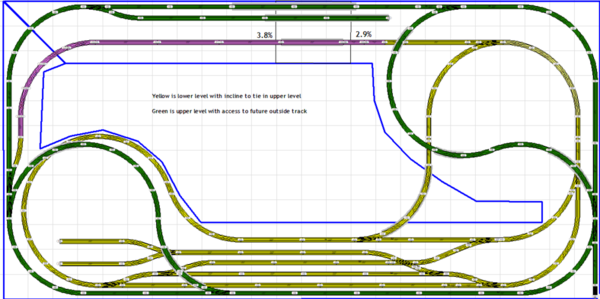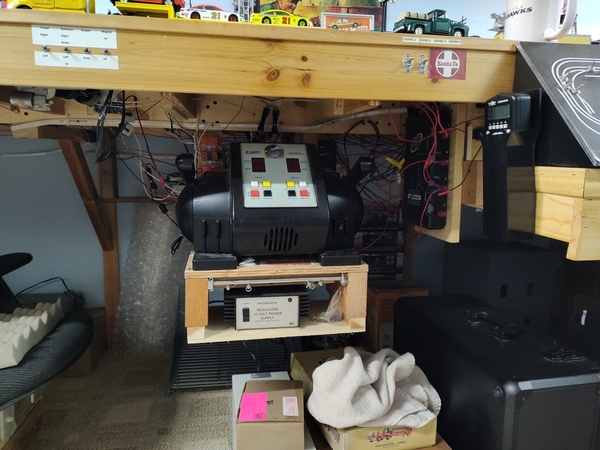'morning Mike,
Glad you chose that location, seemed centrally located to me. I assume your drawing is scaled and so I don't see any reason for 36-40 feet wire runs. I see two runs, one up to the siding in front and one to the adjacent track, that could be 17 feet or so.
It starts with how you configure your track into isolated blocks. I believe I read once on the Ross website that switches often make a good place for isolation. For example, if you consider the large loop on the right side bounded by two switches. That loop could be configured as two blocks. Your wiring to reach them only has to get as far as the track coming out of the first switch closest to power. It is possible to put the single DCS drop at either end or in the middle of a block, you just have to honor the recommendation for number of joints the signal will pass through in each block. It is number of track joints, not length of the block, that is important.
I also want sidings that can be powered up and down so I've been studying the different approaches to the watchdog issue. An easy way to handle the watchdog issue with sidings is to dedicate a TIU channel (if possible) to the sidings. Then you want to switch power to those sidings before the TIU channel. The TIU sends watchdogs for a short time when a channel is first powered. I have not tried this method so I can't comment on how DCS behaves. I don't know that this will scale if you have more than a few sidings, but there are more sophisticated ways if this doesn't do it for you.












